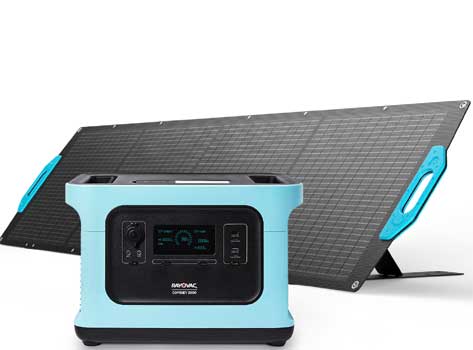
Power Outages Aren't Just Inconvenient—They're Costly and Dangerous
- When storms, blackouts, or grid failures strike, being prepared makes all the difference. Gas generators are loud, smelly, and need constant refueling. And cheap battery backups just can't deliver enough juice.
- The RAYOVAC® Odyssey 2000 is built for serious power needs. Whether it's an emergency at home or an off-grid lifestyle, you'll have peace of mind knowing you're backed by dependable, high-capacity energy.
The Odyssey 2000 is engineered to keep your essentials running:

High-Capacity Battery
2,000Wh LiFePO4 battery for extended runtime

Whole-Home Power Support
Keep appliances, lights, and medical devices running

Dual Charging
Recharge with solar + AC simultaneously

Pure Sine Wave Inverter
Safe for sensitive devices

Whisper-Quiet, Emission-Free
No fumes, no noise, no fuel

Free 200W Solar Panel Included
Off-grid ready right out of the box
Keep Your Gear Powered – Anywhere
Emergency-Ready Power That Works When It Matters Most The Odyssey 2000 keeps your critical gear going:

UPS Mode
Seamless power during blackouts
Runs Refrigerators, Medical Devices & More
Peace of mind for your home
AC, DC, and USB Outputs
Power everything from tools to tech

Smart Battery Management
Protects devices and maximizes efficiency
What Customers Say About the Odyssey 2000
Trusted by Thousands – Real Power When It Matters Most
Powerful Specs for Serious Needs
Battery & Power
- 2,000Wh LiFePO4 Battery – Ultra-long life
- 2,000W Continuous / 4,000W Surge
- Pure Sine Wave Inverter (2x AC Outputs)
Charging Inputs
- MPPT Solar (200W Max)
- AC Input + Solar = Full charge in 4–6 hours
- Car Charging Available
Outputs
- Multiple AC Outlets
- USB-A, USB-C, DC Ports
- UPS Mode for backup readiness

Everything You Need for Whole-Home Power Your RAYOVAC® Odyssey 2000 includes
- Odyssey 2000 Power Station
- Free 200W Solar Panel
- AC Charging Cable
- DC-to-DC Charging Cable
- User Manual
Be Ready for Anything. Power Up with Odyssey.
Your 2,000Wh backup solution is waiting. Order today and get a Free 200W Solar Panel included.
-
Ships fast from U.S. warehouse
-
30-Day Risk-Free Trial
-
Backed by 100+ Years of Trusted Power














